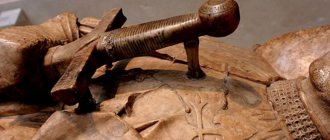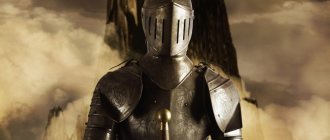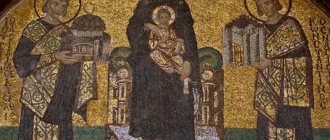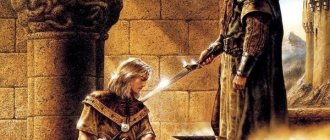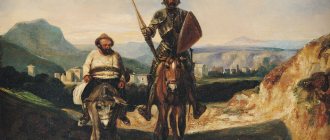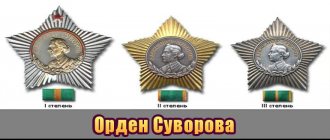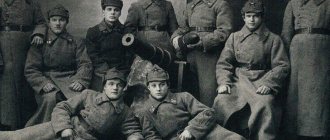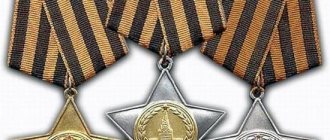The Holy Land needs holy warriors
Well, or almost saints. In any case, in selfless people, ready to endure severe hardships for the sake of the prosperity of the land on which Jesus Christ walked. And such people were found. They united into military monastic orders, two of which - the Templars and the Hospitallers (we recently wrote about the latter) - gained especially great fame. In 1119 (after the conquest of Jerusalem), a group of knights led by Hugh de Payns founded the monastic order of the Templars - also known as the Order of the Templars, also known as the Order of the Poor Knights of Christ. They vowed to protect the Holy Land from infidels and to protect Christian pilgrims who traveled to the East. Very soon the order grew, received preferences from the Pope and European kings, acquired property and a network of commands in different countries. Donations and the results of their own labor made it possible to amass a considerable treasury. In general, things went smoothly. In the 12th–13th centuries. The Templars became one of the richest corporations. In France alone there were about seven hundred large and small commanderies and houses of the order (and in Paris an entire block with a donjon in the center belonged to the templars), and hundreds more in Spain and Portugal, Italy and Germany, England and Scotland...
Hugo de Payns. (Wikimedia Commons)
Warriors in white cloaks with a scarlet cross, who became the textbook image of the crusaders, are the Templars. However, in the total mass of Christian troops there were not so many of them; usually the order kept an army of only a few thousand people, including knights, brother ministers and their assistants. Despite the wealth of the Templars, they could not become a very large army for many reasons: money is still not endless and is needed to maintain the monasteries of the Templars throughout Europe; secondly, an overly strong military organization would not have pleased the pope and the kings (this is what happened later); and thirdly, not every Christian, even a pious one, would agree to become a Templar - there are too many vows.
Composition of the organization
Members of the knightly brotherhood were divided into categories, each of which had specific functions. At the very top, as it was supposed to be in those days, there were brother knights. These are the descendants of noble families who made up the elite of the order’s troops. Slightly lower in status in this structure were the priest brothers, who organized the ceremonial, ideological component of service in the order. In addition, they were also engaged in various sciences and were, perhaps, the most educated members of the community.
Commoners who were engaged in both military and church service were called other brothers.
The Knights of the Teutonic Order also attracted laymen into their ranks, not bound by solemn vows, but nevertheless bringing considerable benefit. They were represented by two main categories: half-brothers and familiars. Familiars are generous sponsors from among the wealthiest segments of the population. And the half-brothers were involved in various economic activities.
Warriors of light, goodness and... obedience
The life of an ordinary Templar warrior is a life full of battles, hardships and prayers. They suffered heavy losses in the crusades (more than half of the Templar masters died in battle), and when they were far from the battlefield, they worked or prayed. The order accepted free, single and unencumbered young men with debts and crimes (in addition, they did not accept priests or excommunicated from the church). The young brothers spent several years in the monastery, where they got used to the way of life of the templars and studied, so that they could then go to the Holy Land.
Each Templar, upon joining the order, renounced all property, freedom, and even his family name - from now on he was called only by his godfather (“Brother Jean,” for example). Not your money, not your clothes or personal belongings. Nothing can be purchased or accepted as a gift. Everything was given out by the order: weapons - sword, dagger, spear and shield; armor and horse, harness and harness; clothes - a white cloak with a red cross, a white tunic, a leather belt, a hat and a felt hat, trousers and shoes; a spoon, a bowl, a bowl, a bag, a straw mattress for sleeping, a tablecloth, a blanket... That's all. Everything is the same for everyone and as it should be according to rank and regulations. Beards and shaved heads completed the recognizable appearance of the templar. Each brother was obliged, under pain of punishment, to keep his clothes clean and promptly ask for new ones (but usually no more than once a year), to take care of his horse and weapons.
The vestments of a 13th century Templar knight. (twcenter.net)
Moderation was also observed in food. On the table were products purchased by the master or grown with his own hands in the monastery. After the next prayer, the bell called the brothers to the refectory. The food was hearty, but without excess or ingenuity, for gluttony is sinful. Three times a week, except for fasting days, meat (often pork) was served, and on other days vegetables or fish. The templars ate bread, cheese, lard, herbs, and dairy products, and drank water and wine. The food had to be cut carefully so as not to spoil the “marketable appearance” - the leftovers were given to the poor in the evening. During meals, knights usually remained silent, like monks in ordinary monasteries. However, the Templars spent the rest of their time sadly. The brothers either fought or carried out peaceful tasks of the order: patrol service, cargo delivery, training and caring for horses, for the literate - service in the office or library. The rest of the time was devoted to prayers, which were necessarily offered at least eight times a day, and the number of repetitions of the “Our Father” or appeals to the Mother of God was regulated (sometimes 10, and sometimes 30). The first prayers in the chapel were offered before dawn, in the wake of sleep, and the last ones were said before going to bed in a wretched bed.
Templars praying [reconstruction]. (natgeotv.com)
There was almost no entertainment allowed, because every Templar is a monk. Laughing and needlessly chatting is not good, gambling is even worse, even chess is banned. There was no need to talk about sexual adventures: the vow of chastity implied a complete renunciation of women, and especially men. Even while sleeping, the knights left a burning candle in the common room, “so that enemies in the shadows could not lead them into temptation.” Violation of this prohibition was punished as severely as the possession of at least a few sou (a crime against the vow of poverty). It was not allowed to hug even female relatives - neither sister nor mother. It was not allowed to go into the city alone or enter the brother's room in the inn. You can't get angry, fight, or swear. Politeness was considered a characteristic trait of the Templars. Typical addresses to each other were “dear brother” or “fair brother,” but in anger, simply “brother” was acceptable.
Without demand and reason, it was impossible to leave the monastery, take weapons, ride a horse, give something, keep what you found, decorate clothes... And all this torment - without even intangible reward. The thirst for personal glory was considered a bad thing. All for the well-being of the Holy Land and faith in the Lord, for the sake of the fight against the infidels. It was not for nothing that the motto of the Templars sounded like this: “Not to us, Lord, not to us, but to Your name give glory!”
Brothers in training, reconstruction. (myguideslovakia.com)
Structure of the Teutonic Order
The provinces (comturias) of the order were located on the territory of Livonia, Apulia, Teutonia, Austria, Prussia, Armenia and Romagna. The chronicles mention seven large provinces, but there were also smaller possessions.
Each position and title in the order was elective. Even the head of the order, the Great Grandmaster, was elected and was obliged to confer with 5 grossgebiter (Great Lords). Each of these 5 permanent advisers was responsible for a specific direction in the order:
- Grand Commander (right hand of the head of the order and its intendant).
- Supreme Marshal.
- Supreme Hospitaller (managed all the hospitals of the organization).
- Quartermaster.
- Treasurer.
The management of a certain province was carried out by the Land Commander. He was also obliged to confer, but with the chapter. Even the commander of the fortress garrison (castellan) made this or that decision with an eye on the opinion of the soldiers under his command.
If you believe the chronicles, the Teutonic knights were not distinguished by discipline. The same Templars had much stricter rules. Nevertheless, at first the organization coped quite effectively with the tasks assigned to it.
Asceticism
Even Bernard of Clairvaux, the spiritual leader and one of the ideological inspirers of the Crusades, drew a clear line between the monastic knights and the secular ones. According to him, traditional chivalry was on the side of the Devil. Lush clothes, knightly tournaments, luxury - all this alienated them from the Lord. A true Christian warrior is dirty, with a long beard and hair, despising worldly vanity, focused on fulfilling his sacred duty. When going to bed, the brothers did not take off their clothes and boots. Therefore, it is not surprising that typhus and the knights of the Teutonic Order always walked hand in hand.
However, almost all of “cultural” Europe for a long time, even after the Crusades, neglected the rules of basic hygiene. And as punishment - multi-shift outbreaks of plague and smallpox, which destroyed most of its population.
Having enormous influence in society, Bernard of Clairvaux (even the papacy listened to his opinion) easily pushed through his ideas, which excited minds for a long time. Describing the life of a knight of the Teutonic Order of the 13th century, it should be mentioned that, despite the high rank in the hierarchy of the organization, any member had the right to have only a certain set of personal belongings. These included: a pair of shirts and two pairs of boots, a mattress, a surcoat, and a knife. There were no locks on the chests. Wearing any fur was prohibited.
It was forbidden to wear their coats of arms and boast of their origin during hunts and tournaments. The only permitted entertainment was wood carving.
Various punishments were provided for violating the rules. One of these was “removing the robe and eating on the floor.” The guilty knight had no right to sit at a common table with other brothers until the punishment was lifted. This punishment was most often resorted to for serious violations during the campaign. For example, violation of the order.
Armor
The basis of the full-length protective equipment of a knight of the Teutonic Order was chain mail with long sleeves. A chainmail hood was attached to it. A quilted gambizon or caftan was worn underneath it. A quilted cap covered the head over the chain mail. A shell was put on top of the listed uniform. German and Italian blacksmiths paid the closest attention to the issue of modernizing armor (their English and French colleagues did not show such agility). The result was a significant strengthening of plate armor. Its chest and back parts were connected at the shoulders, with lacing on the sides.
Until about the middle of the 14th century, the breastplate was of a relatively small size, designed to protect the chest, but later this oversight was corrected. The belly was now also covered.
Experiments with steel, a lack of qualified personnel, and a combination of German and Italian styles in gunsmithing led to the fact that “white” steel became the main material for the manufacture of such equipment.
Leg protection usually consisted of chain mail stockings and steel knee pads. They were worn on legguards. In addition, there were leggings made from a single plate. The knights' spurs were studded and gilded.
Features of coats of arms
The knight's coat of arms was depicted on the shield and surcoat. Its main part was geometric in shape, and it was painted with different colors, depicting heraldry and symbolic pictures. If the shield of the coat of arms consisted of several colors, then the surcoat was sewn from fabric of the same shades. At first, coats of arms were used only during military campaigns, but later they migrated into everyday life. They were depicted on furniture and costumes to emphasize the title and rank of a knight.
Since the riders appeared in the ring or battlefield, clad in armor, they could not be distinguished - they looked the same. And so they invented coats of arms - distinctive signs that decorated shields and helmets. Many stories about knights are associated with them. One famous crusader, an Austrian duke, became so dirty with blood during a battle that his white clothes remained clean only under his belt. Upon returning home, he made himself a new coat of arms: a white belt in a red field.
The famous Aragon received a new distinctive sign also on the battlefield.
To admire his courage, King Charles the Bald dipped his fingers in the knight's blood and ran them over the warrior's golden coat of arms. The most complex drawings were made by knights who committed outstanding deeds.
The basis of the coat of arms was the shield.
Its form depended on the country where the warrior lived:
- oval - Italy;
- triangular - Normandy;
- square with a rounded bottom - Spain;
- quadrangular with a pointed end - France;
- figured - Germany.
The coats of arms were decorated with furs, precious metals and stones, and enamel. They could be plain or multi-colored, beveled or crossed. The shades used symbolized the qualities that the knight possessed.
Red - passion and courage, green spoke of love of freedom and hope, blue meant clarity of mind and greatness, purple - power, gold indicated nobility and wealth, silver implied a noble character, black - modesty and sadness.
The older and richer the horseman’s family, the more patterns were depicted on his coat of arms.
Definition of common patterns:
- crane - caution;
- Leo - courage and strength;
- vulture - ferocity;
- unicorn - invincibility;
- wolf - anger;
- cat - independence;
- rooster - belligerence;
- peacock - boasting;
- boar - fearlessness.
They depicted not only animals, but also plants. The lily meant blossoming, the rose meant purity, and the tulip meant openness.
Armament
The uniform and weapons of the knights of the Teutonic Order were distinguished by excellent efficiency. There was an influence not only of the best traditions of the West, but also of the East. If we touch on the topic of small arms of that time, then, judging by the surviving documents detailing the characteristics and type of cocking mechanism, some conclusions suggest themselves:
- conventional, small and composite crossbows stood out;
- firearms were mastered with enthusiasm;
- The order had the opportunity to produce some of this type of weapons independently.
Swords were considered a more noble weapon, but crossbows were anathematized by some of the heads of the Catholic Church. True, few people paid attention to this. In war, all means are good.
Battle axes and hammers were considered the most favorite means of close combat. After a stay in Palestine, the shape of the ax blade was borrowed there. They could easily penetrate armor. The sword could not boast of such characteristics.
Martial traditions
The knights of the Teutonic Order differed favorably from the lay knights in their discipline. The order's charter regulated every little detail, not only in battle. Usually the knight was accompanied by several of his squires with marching horses that did not participate in the fighting. The war horse was used only in battle, but even with several spare animals, warriors most often covered long distances on foot. It was strictly forbidden to mount a horse or put on armor without an order.
In military matters, the Teutons were pragmatic. Traditional knighthood on the battlefield could easily start a quarrel over the right to be the first to attack in order to cover the name with glory. Even while in battle, they could easily break formation or give a signal without permission. And this is a direct road to defeat. Among the Teutons, such offenses were punishable by death.
Their battle formation was carried out in three lines. The reserve was located in the third line. Heavy knights came to the forefront. Behind them, horsemen and auxiliary forces were usually lined up in the shape of an elongated quadrangle. The order's infantry brought up the rear.
This distribution of forces had a certain meaning: a heavy wedge disrupted the enemy’s battle formations, and the less combat-ready units following behind finished off the staggering enemy of chivalry.

